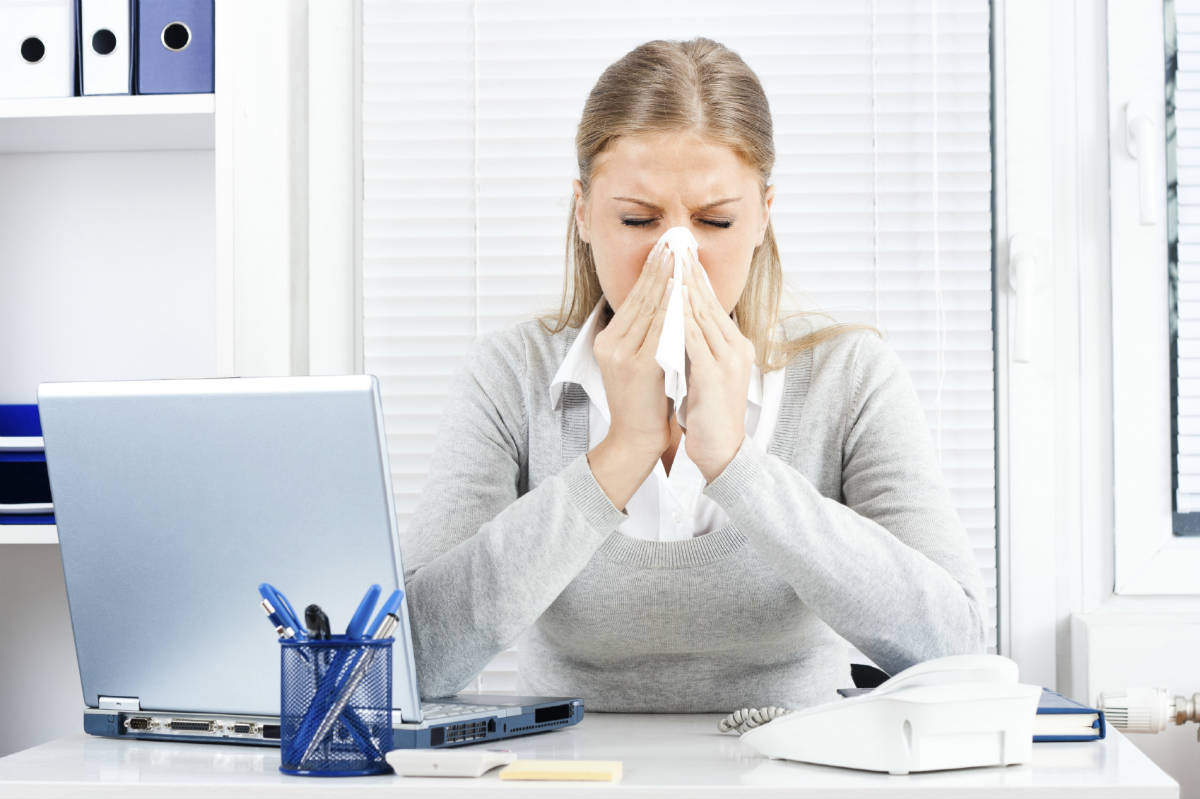August 24, 2015

Poor indoor air quality can have an adverse affect on the health, comfort, and efficiency of the employees in a St. Louis home or place of work.
High humidity and poor maintenance of HVAC systems are the biggest culprits when it comes to poor indoor air quality. Due to the various ill effects of humidity and poor indoor air quality, more and more employees, employers and facility owners are becoming concerned.
How Humidity Affects Air Quality
- In humid conditions the viruses and bacteria that causes the respiratory infections can rapidly multiply and spread.
- High Humid conditions can increase the levels of noxious chemicals in the air; including formaldehyde (emissions from indoor building materials) and ozone (emission from copiers)
- Molds and other pathogens thrive in high humid conditions.
How Humidity Affects the Work Environment
Poor air quality can often be attributed to humid conditions and can affect the employees of an organization with a wide range of illnesses and symptoms. Humidity can also have adverse effects on a building and its contents.
Cold climate, electrical appliances that generate heat, or poor design, installation and maintenance of air conditioning systems give rise to low humidity conditions. Listed below are a few of the signs of low humidity:
- Employees might report dry throat, sore eyes, dry and itchy skin, headache, or stuffy nose.
- Computer failures – brought about by the static electricity.
- In buildings with synthetic carpets, low humidity can give rise to static electricity, which in turn can cause itchiness in employees.
On the other hand, if the weather is warm or the air conditioning systems are faulty it can lead to high humidity. High humidity can cause various problems including:
- A work environment with damp conditions can result in mold growth, and in turn cause nasal stuffiness, wheezing, lung infections, and itchiness.
- Indoor building materials, such as office desks, can get damaged due to condensation caused by damp air.
- In high concentrations, the dust mites can have adverse effect on asthmatic people
If the indoor humidity levels are maintained between 40- 60%, then majority of the adverse health effects can be minimized. For sedentary work, ASHRAE recommends a temperature range of 68°F to 78°F at a relative humidity of 50% for a comfortable working environment.
How to Control the Humidity Levels
Building owners have to be vigilant in the control and monitoring of humidity levels in a workplace to assure on good quality air. Here are few steps that can prevent the adverse effects of poor indoor air quality in a work environment:
- Use of monitoring tests to check the humidity, temperature and air flow for each individual space in a building.
- Periodic checks for leakages and odors, and the removal of stagnant water in the humidifiers, boiler pans, roofs, and air-conditioning units.
- The humidity levels should be checked throughout the day as the moisture levels in the air keep changing over the course of a day.
- Employee comfort levels should be monitored.
- Regular Inspection of the HVAC systems and testing their performance in accordance with the building’s occupancy and use specifications.
Speak With a Professional!
For more information, get in touch with the trusted HVAC team at Scott-Lee Heating Company. We would be happy to answer your questions regarding commercial or residential indoor air quality and provide you with the very best solutions. Call us today at (314) 200-0788!
